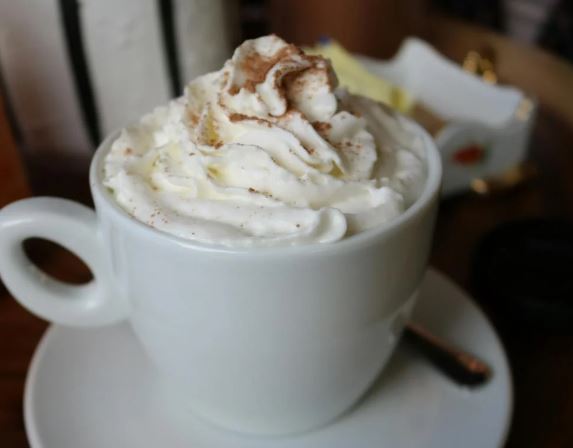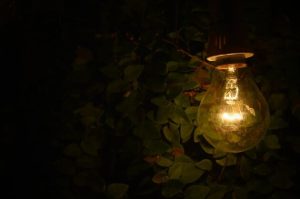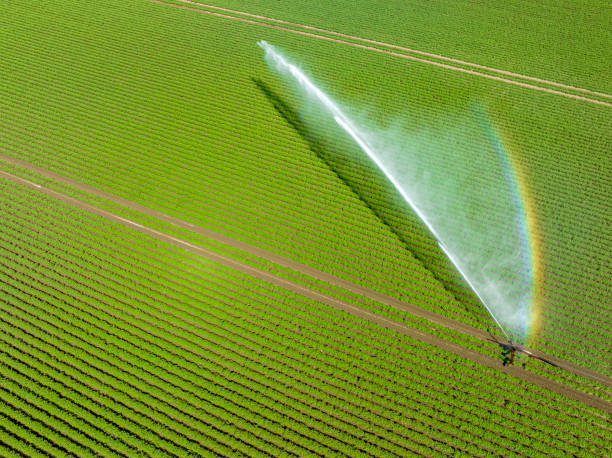Latest Posts
Optimal Protective Covers for Large Travel Trailers in Adverse Conditions
When it comes to protecting your RV from the elements, weatherproofing is essential for maintaining its condition and prolonging its lifespan.
Whether you’re venturing into heavy rain, snow, or scorching sunlight, choosing the right cover can make a world of difference. Many RV owners underestimate the impact of harsh weather conditions on their travel trailers and fail to invest in adequate protection, which can lead to costly repairs over time. Fortunately, there are a variety of cover options designed specifically to shield your RV from adverse environments.

The Importance of a Travel Trailer Cover
Purchasing a travel trailer cover is a smart move for any camper looking to maintain the value of their investment. Protective covers for large travel trailers are must because not only does it protect against environmental factors and physical damage, but it also saves you money in the long run by reducing the need for repairs and maintenance. By taking this simple step to cover your travel trailer, you are not just prolonging its life but also preserving the countless memories you will create on your journeys ahead.
Investing in a Quality Travel Trailer Cover
Selecting the right travel trailer cover means considering various materials and features that cater to the specific needs of your trailer. A good cover should be designed to withstand UV rays, resist moisture, and be breathable to prevent mold and mildew build-up. Look for covers that are structured with reinforced seams and straps to provide a snug fit, as well as those equipped with ventilation systems to allow air circulation. Investing in a quality cover not only protects the physical integrity of your trailer but also helps maintain its resale value, offering future savings that far exceed the initial expense.
Best Cover Options for an Adverse Environment
One of the most popular choices among RV enthusiasts is the travel trailer cover made from heavy-duty materials that are both waterproof and breathable. This type of cover creates a strong barrier against not only rain and snow but also UV rays, which can fade and damage exterior finishes. Look for covers that feature reinforced seams, extra straps, and adjustable features to ensure a snug fit. These covers provide maximum protection while allowing moisture to escape, preventing mold and mildew buildup that can occur in less breathable materials.

Alternatively, if you’re looking for a more budget-friendly option, lighter-weight covers can also offer a reasonable level of protection. These are usually made from fabric that is water-resistant and designed to withstand mild weather conditions. However, it’s crucial to note that these covers may not hold up as well against extreme weather or prolonged exposure to the elements. For those who store their RVs outdoors in particularly harsh climates, investing in a high-quality travel trailer cover is undoubtedly worth the upfront cost.
Ultimately, selecting the right weatherproofing solution for your RV involves considering your local climate and how often you use your travel trailer. Whether you choose a heavy-duty cover or a lighter alternative, taking the time to protect your investment will pay dividends in the long run. Regular maintenance and inspections alongside proper covering can help ensure your RV remains in top condition, ready for your next adventure, no matter what nature throws your way.
Eco-Conscious Driving: Why TRD Rims Are a Sustainable Choice
 In an era where sustainability has become a driving force in consumer choices, eco-conscious driving practices are gaining traction among car enthusiasts and everyday drivers alike. One option that harmonizes performance and environmental responsibility is the adoption of TRD (Toyota Racing Development) rims. These specially designed wheels are not only crafted for enhanced durability and performance, but they also contribute to a more environment-friendly approach to vehicle modification.
In an era where sustainability has become a driving force in consumer choices, eco-conscious driving practices are gaining traction among car enthusiasts and everyday drivers alike. One option that harmonizes performance and environmental responsibility is the adoption of TRD (Toyota Racing Development) rims. These specially designed wheels are not only crafted for enhanced durability and performance, but they also contribute to a more environment-friendly approach to vehicle modification.
TRD rims are engineered with lightweight materials that reduce overall vehicle weight, directly impacting fuel efficiency. When a vehicle is lighter, it requires less power to operate, which means less fuel consumption and reduced carbon emissions. This innovative design aligns perfectly with eco-conscious driving principles, making trd rims an appealing choice for those who wish to lessen their carbon footprint without sacrificing style or capability.
Moreover, the manufacturing process of TRD rims often employs sustainable practices, such as efficient resource use and reduced waste. By choosing these rims, drivers are not just investing in a high-quality product, but are also supporting companies that prioritize eco-friendly operations. As awareness about the environmental impact of our choices grows, selecting products that reflect eco-friendly values becomes increasingly important.
Adopting TRD rims is more than just a trend; it’s a commitment to making informed, environmentally responsible choices in our automotive lifestyles.
By merging performance with sustainability, these rims represent a smart investment for both the driver and the planet. In the quest for eco-conscious driving, choosing TRD rims is a statement that affirms one’s dedication to preserving the environment while enjoying the thrill of the road.
The Best TRD Rims for Your Vehicle Upgrade
For those looking for an eco-conscious option, the TRD aluminum rims stand out as a highly environment-friendly choice. Crafted from lightweight materials, they help improve fuel efficiency while reducing the overall weight of your vehicle. The design prioritizes strength without compromising on sustainable practices, making them an excellent option for environmentally conscious drivers. Furthermore, these rims often come with advanced finishes that not only look good but are also resistant to the elements, extending their lifespan and reducing the need for frequent replacements.

Another must-consider option is TRD’s beadlock wheels, particularly appealing for off-road enthusiasts. These rims provide superior traction by allowing for lower tire pressures, improving grip on challenging terrains such as mud, sand, and rocky paths. While they offer functional advantages, the rugged design of beadlock wheels also fits seamlessly into the adventurous persona many truck and SUV owners aspire to reflect. The combination of high-performance capability and striking visuals makes these rims an excellent choice for those ready to take their vehicle to the next level.
Ultimately, selecting the right TRD rims involves considering both style and functionality, but also how those choices align with eco-friendly practices. With offerings like aluminum and beadlock wheels that balance performance and sustainability, TRD presents an impressive array of options to enhance your vehicle’s capabilities while being considerate of the environment. Investing in quality rims not only elevates your ride but can also contribute to a more sustainable automotive culture.
Sustainable Agriculture: A Path to Resilient Food and Climate Solutions
Globally food security and agricultural output are seriously threatened by climate change. Rising frequency and intensity of extreme weather events including droughs, floods, and heat waves are upsetting established agricultural methods and aggravating food shortages. Still, sustainable agriculture presents a viable way to guarantee a strong and fair food supply while lessening the effects of climate change.
Ecological Agriculture
-
Diversity of Crops
Benefits include less susceptibility to climate shocks, illnesses, and pests.
Strategies: crop rotation, cover crops, and intercropping
-
Conservation of Farmwork
Benefits: increases water retention, lessens erosion, and improves soil condition.
Methodologies: minimum tillage, no-till farming, crop residue retention
-
Agroforestry
Benefits include shade, increased soil fertility, and more biodiversity.
Systems: Farm forestry, forest gardens, Alley cropping
-
Managing Water
Advantues include water resource preservation and lower irrigation expenses.
Methods: drip irrigation, effective irrigation systems, rainwater collecting
-
Managers of Livestock
Reduces greenhouse gas emissions and enhances animal welfare are the benefits.
Techniques: silvopasture, pastures based on grazing, less usage of antibiotics
Final Statement
Apart from tackling climate change, sustainable agriculture helps to create strong and fair food systems. These methods will help farmers guarantee food security for next generations, improve agricultural output, and save the environment. If we are to create a more resilient and sustainable planet, governments, businesses, and consumers have to all assist the change to sustainable agriculture.
Green Sports: How Environmental Sustainability is Shaping Modern Sports

Sustainable practices are becoming increasingly important in all sectors, including sports. The push for environmental responsibility is now a fundamental part of the athletic world. From stadiums to equipment, the drive for greener alternatives influences how sports are played and viewed. The sporting industry generates significant carbon emissions, prompting organizations to rethink their practices. Implementing sustainable strategies not only helps the environment but also appeals to a growing audience that values ecological responsibility.
Sports broadcasting plays a crucial role in this shift toward sustainability. As networks highlight environmentally friendly initiatives, they educate audiences and inspire action. Broadcasting platforms are integrating stories of sustainability into their coverage, showcasing teams and events that prioritize eco-friendliness. This trend encourages sports fans to consider the environmental impact of their favorite activities. By emphasizing green initiatives, broadcasting companies are shaping public perception and fostering a culture of sustainability.
The Impact of Sustainable Practices in Sports
Environmental sustainability in sports goes beyond just recycling and waste management. It encompasses various aspects, including energy use, water conservation, and responsible sourcing of materials. Here are some of the key areas where sustainability is making a difference:
Stadium Design and Operations
- Energy Efficiency: New stadiums are designed with energy efficiency in mind. Solar panels, wind turbines, and energy-efficient lighting systems are common features.
- Water Conservation: Innovative irrigation systems and rainwater harvesting help reduce water consumption.
- Waste Management: Many venues implement comprehensive recycling and composting programs to minimize waste.
Equipment and Apparel
- Eco-Friendly Materials: Manufacturers are using recycled materials to produce athletic gear. This shift helps reduce the carbon footprint of production processes.
- Sustainable Practices: Companies are adopting ethical labor practices and reducing waste in their manufacturing processes.
Transportation and Logistics
- Green Transportation: Teams and leagues are investing in electric vehicles and promoting public transportation for fans attending events.
- Carbon Offsetting: Some organizations are adopting carbon offset programs to mitigate the environmental impact of travel and logistics.
Benefits of Going Green in Sports
Adopting sustainable practices offers several advantages for sports organizations:
Enhanced Brand Image
- Attracting Fans: Eco-friendly initiatives appeal to fans who prioritize sustainability, helping teams grow their fan base.
- Sponsorship Opportunities: Brands increasingly want to partner with organizations that reflect their values, including environmental responsibility.
Long-Term Cost Savings
- Lower Operating Costs: Energy-efficient buildings and practices can lead to significant savings on utilities.
- Government Incentives: Many governments offer tax breaks and incentives for organizations that adopt sustainable practices.
Positive Community Impact
- Community Engagement: Teams that prioritize sustainability often engage with their local communities through outreach programs and partnerships.
- Inspiring Change: By leading by example, sports organizations can inspire fans to adopt eco-friendly practices in their own lives.
Challenges to Sustainability in Sports
Despite the progress being made, several challenges remain:
Initial Investment
- High Upfront Costs: Implementing sustainable practices often requires a significant initial investment, which can deter organizations from pursuing these initiatives.
Awareness and Education
- Lack of Knowledge: Many teams and organizations may not fully understand the benefits of sustainability or how to implement effective strategies.
Balancing Tradition and Innovation
- Resistance to Change: Some fans and stakeholders may resist changes that affect long-standing traditions in sports.
The Future of Green Sports
As the emphasis on environmental sustainability continues to grow, the sports industry will likely evolve in exciting ways:
- Innovative Technologies: Advances in technology will enable more efficient practices, from energy use to material sourcing.
- Increased Collaboration: Partnerships between organizations, governments, and non-profits will enhance the impact of sustainability initiatives.
- Greater Fan Involvement: Fans will increasingly demand accountability and transparency from their favorite teams regarding their environmental impact.
Embracing sustainability is not just a trend; it is essential for the future of sports. By prioritizing eco-friendly practices, the industry can lead the way toward a more sustainable future. This commitment not only benefits the environment but also enhances the overall experience for fans and communities alike.
READ ALSO: How Spotify Promotes Sustainable Music Listening
Conclusion
The transformation of sports through sustainable practices is already underway. Organizations are realizing that going green is not just beneficial for the environment; it also enhances their brand and strengthens community ties. As the industry continues to embrace sustainability, the message is clear: sports can play a significant role in promoting environmental responsibility.
Measuring Up: The Importance of Corporate Environmental Reporting
Companies are starting to understand the need of minimizing their negative effects on the environment. This isn’t merely a fad; it’s completely essential. Businesses must track and disclose their environmental performance metrics if they are to comprehend and control this effect.
Its Importance
Companies that put an emphasis on sustainability are in high demand from both consumers and investors, which helps to build trust. Honest reporting fosters confidence and devotion.
Uncovering Potential
Leveraging data-driven insights can help you find ways to save money and find places to improve. Keeping tabs on environmental performance allows businesses to foresee possible dangers and devise plans to deal with them.
Things to Record
A key indicator, although not the sole one, is the amount of greenhouse gas emissions. In order to find ways to decrease waste, it is helpful to keep tabs on garbage. Watching how much water is being used is very important because water shortage is becoming an increasingly serious problem. Less energy use means less money spent and fewer pollutants.
Supply Chain Impact
It is crucial to know how your supply chain affects the environment.
Reporting That Achieves Results
Be forthright about your environmental initiatives, successes, and setbacks.
1-Use Clear Metrics
Simplify your statistics and stay away from jargon. Third-party verification can help you make sure your data is accurate and trustworthy.
2-Demonstrate your dedication to constant growth by setting ambitious goals.
Nowadays, environmental performance is one of the most important metrics for evaluating a company’s success.
Final Thoughts
Businesses can gain an advantage in the market and lessen their negative effects on the environment by measuring and reporting their progress openly.
GRABE’s Effluent Treatment Equipment: Advancing Environmental Protection

Effluent treatment is essential in maintaining environmental balance, especially in industrial sectors where waste byproducts pose a significant threat to ecosystems. GRABE’s industrial equipment, such as aerators, decanters, and water and oil separators, is central to these efforts, providing effective solutions for managing and reducing industrial pollution.
Aerators: Enhancing Oxygen Levels in Treatment Processes
Oxygen is a critical component in many biological treatment processes. GRABE’s aerators are designed to efficiently incorporate oxygen into liquid mediums, whether in wastewater treatment plants or in aquaculture environments. By ensuring adequate oxygen levels, these aerators facilitate the breakdown of organic matter, thereby reducing harmful substances in the effluent before it is released into the environment.
Aerators from Grabe are particularly effective in aerobic treatment processes, where microorganisms require oxygen to decompose organic waste. This process cleans the wastewater and helps control odor, a common problem in treatment facilities. With GRABE’s advanced aerators, industries can significantly reduce their environmental footprint, ensuring that effluent discharge meets regulatory standards.
Decanters: Removing Suspended Solids
Another vital piece of equipment in GRABE’s lineup is the decanter, which is crucial in separating solid particles from liquids. If properly treated, suspended solids in industrial effluent can cause significant environmental damage. GRABE’s decanters use gravity to settle these particles, allowing for cleaner water to be discharged.
These decanters are particularly effective when large effluent volumes must be treated quickly and efficiently. By removing suspended solids, GRABE’s decanters help minimize the impact of industrial activities on water bodies, contributing to the preservation of aquatic life and ecosystems.
Water and Oil Separators: Protecting Water Resources
Oil contamination in water is a significant environmental concern, particularly in industries such as manufacturing and transportation. GRABE’s water and oil separators are designed to address this issue by separating non-emulsified oils from water. This separation is crucial as oil can severely affect aquatic ecosystems, preventing oxygen from dissolving in water and harming marine life.
GRABE’s separators are engineered to handle various oil types, ensuring that the effluent released into the environment is free from harmful contaminants. Industries can safeguard water resources by employing these separators, ensuring that their operations do not contribute to environmental degradation.
Supporting Sustainable Practices
The use of GRABE’s effluent treatment equipment is a testament to the company’s commitment to environmental protection. By providing industries with the tools needed to treat their waste effectively, GRABE helps reduce the overall environmental impact of industrial activities.
Effluent treatment is not just about meeting regulatory requirements; it’s about adopting sustainable practices that protect the environment for future generations. GRABE’s equipment enables industries to take a proactive approach to environmental protection, ensuring that their operations are both efficient and eco-friendly.
READ ALSO: Packaging: Tips To Protect The Environment
Conclusion
GRABE’s role in environmental protection through its effluent treatment equipment cannot be overstated. Aerators, decanters, and water and oil separators are just a few examples of the company’s innovative solutions to help industries responsibly manage their waste. By integrating GRABE’s equipment into their operations, industries can ensure that they contribute to environmental sustainability, reduce pollution, and protect natural resources for the future.
The Role of Recycled Materials in Nang Production

Nangs, or cream chargers, are essential for making whipped cream and other culinary creations, but their production and disposal can harm the environment. A positive development in this area is the use of recycled materials in nang production, which helps reduce their environmental impact.
What Are Nangs and Why Do They Matter?
Nangs, also known as cream chargers or whipped cream dispensers, are small, pressurized canisters filled with nitrous oxide (N2O). This gas is used to create whipped cream and other foams in cooking and baking. While nangs are widely used in both commercial kitchens and home kitchens, their production involves various materials and processes that can affect the environment.
The Environmental Impact of Traditional Nangs
Traditional nang production relies heavily on materials like metal, particularly steel and aluminum, which require substantial energy to mine, process, and fabricate. Additionally, the production process generates greenhouse gases and other pollutants. Once used, these canisters often end up in landfills, where they take years to decompose, contributing to environmental degradation.
The Shift to Recycled Materials
To address these environmental concerns, manufacturers are increasingly turning to recycled materials for nang production. Here’s how this positive change is making a difference:
Reducing Resource Consumption
Using recycled materials significantly cuts down on the need for raw resources. For instance, recycled aluminum and steel require less energy to process compared to their virgin counterparts. This reduction in energy use translates to fewer greenhouse gas emissions and a lower carbon footprint for the production of nangs.
Minimizing Waste
Recycled materials help reduce the amount of waste that ends up in landfills. By repurposing used metals, manufacturers can minimize the amount of new material needed. This not only conserves resources but also helps to manage waste more effectively, reducing the strain on landfills and the environment.
Lowering Production Costs
Recycled materials are often more cost-effective than new materials. This can lead to lower production costs for nangs, which might make it more feasible for manufacturers to adopt eco-friendly practices. Lower costs can also make sustainable products more accessible to consumers.
Promoting a Circular Economy
The use of recycled materials supports a circular economy, where products and materials are reused and recycled rather than disposed of. In this system, materials are continuously cycled back into production, reducing the need for new raw resources and minimizing waste.
Encouraging Industry-Wide Change
As more manufacturers adopt recycled materials, it sets a precedent for others in the industry. This ripple effect can encourage more companies to follow suit, leading to broader changes in the production practices of nangs and other products.
Several companies are already leading the way in incorporating recycled materials into their nang production. For example, some manufacturers use recycled aluminum for their canisters, which reduces the need for new aluminum and lowers overall energy consumption. Others are exploring the use of recycled steel and advanced recycling technologies to further minimize their environmental impact.
While the shift to recycled materials is a positive step, there are still challenges to overcome. Ensuring the quality and safety of recycled materials is crucial, especially in products that come into contact with food. Manufacturers must balance sustainability with the need for reliable performance.
Looking ahead, continued innovation in recycling technology and materials science will be key to further improving the environmental impact of nang production. Advances in these areas could lead to even more effective use of recycled materials and more sustainable production practices overall.
How Consumers Can Contribute
Consumers also play a role in supporting sustainable practices. Choosing products made from recycled materials and properly disposing of nangs can help reduce environmental impact. Recycling used canisters when possible and supporting companies that prioritize sustainability can drive further positive changes in the industry.
The use of recycled materials in nang production is a substantial and beneficial advancement for the environment. By reducing resource consumption, minimizing waste, lowering production costs, and promoting a circular economy, recycled materials offer a more sustainable approach. As more companies and consumers adopt these practices, the nang industry can further diminish its environmental impact and contribute to a healthier planet.
Eco-Friendly Lighting: How Spotlights Can Contribute to Sustainable Living

Sustainable living isn’t just a trend; it’s necessary for our planet’s future. One way to embrace this lifestyle is by choosing eco-friendly lighting solutions, such as energy-efficient spotlights. These lights reduce energy consumption and enhance the ambiance of homes and businesses, proving that sustainability and style can go hand in hand.
Leonlite offers a range of low voltage path lights designed with both the environment and aesthetics in mind. These products are a prime example of how technology and design can collaborate to create sustainable solutions for modern living.
The Environmental Impact of Lighting
Lighting accounts for a significant portion of global energy consumption. While effective, traditional incandescent bulbs are energy-intensive and generate higher carbon emissions. Switching to energy-efficient lighting, like LED spotlights, can drastically reduce this impact.
- Energy Efficiency: LED spotlights, such as those offered by Leonlite, use a fraction of the energy consumed by traditional bulbs. This lowers electricity bills and reduces the demand for fossil fuels, leading to fewer carbon emissions.
- Longevity: LED lights have a much longer lifespan compared to traditional bulbs. This means fewer replacements, less waste, and fewer resources needed for production and disposal.
- Reduced Heat Emissions: Traditional bulbs convert a lot of the energy they consume into heat, which can lead to higher cooling costs in homes and businesses. LED spotlights emit very little heat, making them more energy-efficient and safer.
Incorporating Spotlights into Sustainable Living
Spotlights are versatile lighting solutions that can be used in various settings, from illuminating walkways to highlighting architectural features. When choosing spotlights for sustainable living, consider the following:
- Low Voltage Path Lights: These lights are ideal for outdoor spaces. They provide adequate illumination while consuming less energy. Leonlite’s low-voltage path lights are designed to be energy-efficient without compromising style or brightness.
- Directional Lighting: Spotlights can be positioned to direct light exactly where needed, reducing the overall number of lights required and minimizing energy use. This targeted approach not only saves energy but also enhances the aesthetic appeal of a space.
- Solar-Powered Options: Solar-powered spotlights are an excellent choice for maximizing sustainability. These lights harness the sun’s power, illuminating at night without additional energy consumption.
The Role of Leonlite in Promoting Sustainability
Leonlite’s commitment to sustainability is evident in its product designs. Their low-voltage path lights testify to how eco-friendly lighting can be functional and beautiful. These lights are designed to be durable, long-lasting, and energy-efficient, making them a smart choice for anyone looking to reduce their environmental footprint.
By choosing products like Leonlite’s, consumers can significantly impact their energy consumption. Whether used in residential settings to light up garden paths or in commercial spaces to enhance the exterior, these spotlights are a step towards a more sustainable future.
READ ALSO: How to Save Energy and have an Eco-Friendly Home?
Conclusion
Embracing eco-friendly lighting solutions like energy-efficient spotlights is a simple yet effective way to contribute to sustainable living. Leonlite’s low-voltage path lights are an excellent example of how design and sustainability can come together to create products that benefit both the environment and the consumer. By making mindful choices in our lighting, we can all play a part in protecting our planet for future generations.
The Lifecycle of a Leather Bag From Production to Disposal

A leather bag is more than just a fashion statement; it’s a product of craftsmanship that passes through several stages from a leather bag manufacturer before it reaches your hands. Understanding the lifecycle of a leather bag—from the sourcing of raw materials to its disposal—offers insights into how we can make more sustainable choices and extend the life of these cherished accessories.
Sourcing Raw Materials
The journey of a leather bag begins with the raw material: leather. Traditionally, leather is sourced from animal hides, most commonly from cattle. Turning these hides into leather, known as tanning, involves several steps to preserve and strengthen the material.
- Environmental Impact: Conventional leather production, especially chrome tanning, can have a significant environmental impact due to the use of heavy chemicals and large amounts of water. However, alternatives like vegetable tanning, which uses natural plant-based tannins, are gaining popularity for their eco-friendliness.
- Sustainable Sourcing: Ethical sourcing of leather is crucial. This involves ensuring that the animals are raised in humane conditions and that their hides are a byproduct of the meat industry, rather than farming animals solely for leather. Some manufacturers are also exploring the use of recycled or reclaimed leather, reducing the need for new raw materials.
Manufacturing the Bag
Once the leather is prepared, it moves on to the manufacturing stage, where skilled artisans cut, shape, and sew the material into the final product. The craftsmanship involved in making a leather bag is one of the reasons these items are so valued.
- Craftsmanship and Quality: High-quality leather bags are designed to last for years if not decades. The durability of leather, combined with the skill of the artisans, ensures that these bags can withstand daily use while maintaining their appearance.
- Energy and Resources: The manufacturing process requires energy and other resources, such as thread, metal for zippers and clasps, and linings made from various fabrics. Sustainable practices in manufacturing, such as reducing waste and using eco-friendly materials, can significantly lower the environmental impact.
Distribution and Retail
Once manufactured, leather bags are distributed to retailers and eventually purchased by consumers. This stage involves transportation, which contributes to the carbon footprint of the product.
- Carbon Footprint: The transportation of goods, particularly over long distances, can add to the overall carbon footprint of a leather bag. Supporting local artisans and purchasing bags made closer to home can help reduce this impact.
- Packaging: The packaging used during shipping and retail also plays a role in the environmental impact. Sustainable packaging options, such as recycled or minimal packaging, are becoming more common as consumers and companies alike become more eco-conscious.
Consumer Use and Care
After purchasing a leather bag, how you care for it can significantly affect its longevity. Leather is a durable material, but it requires proper care to maintain its appearance and functionality.
- Maintenance: Regular cleaning, conditioning, and proper storage can extend the life of a leather bag by preventing it from drying out, cracking, or becoming stained. Investing in high-quality leather care products is a small step that can make a big difference.
- Repair and Upcycling: If a leather bag shows signs of wear or damage, repairing it rather than discarding it can greatly extend its life. Many artisans and specialty shops offer repair services, and some even provide upcycling options, where an old bag is transformed into a new design.
End-of-Life and Disposal
Eventually, even the best-cared-for leather bag will reach the end of its usable life. How it is disposed of can have significant environmental consequences.
- Biodegradability: One of the advantages of genuine leather over synthetic alternatives is its biodegradability. While it does take time, leather will eventually break down, unlike synthetic materials, which can persist in landfills for centuries.
- Recycling and Repurposing: Before considering disposal, think about recycling or repurposing the bag. Leather can be recycled into new products, or the material can be repurposed for other uses, such as crafting smaller accessories. Donating an old leather bag to charity is another option, allowing it to find a second life with someone else.
Tips for a Sustainable Leather Bag
To minimize environmental impact, consumers can take several steps to extend the lifecycle of their leather bags:
- Choose Quality Over Quantity: Investing in a high-quality leather bag that will last for years is more sustainable than frequently replacing cheaper, lower-quality items.
- Care for Your Bag: Regular maintenance, including cleaning and conditioning, can extend the life of your leather bag significantly.
- Repair, Don’t Replace: If your bag shows signs of wear, consider having it repaired instead of buying a new one. This reduces waste and conserves resources.
- Consider Second-Hand Options: Purchasing second-hand leather bags or vintage items is an excellent way to reduce demand for new products and support sustainable fashion.
- Recycle or Donate: When your leather bag is no longer usable, explore recycling or donation options to give it a new lease on life.
The lifecycle of a leather bag, from sourcing raw materials to disposal, emphasizes the significance of making thoughtful choices at every stage. By choosing sustainable materials, promoting ethical manufacturing, and prolonging the lifespan of our leather products through proper care and repair, we can appreciate the beauty and usefulness of leather bags while reducing their environmental impact.
Leveraging AI for Efficient Farming Content Creation

There has been a significant rise in the use of artificial intelligence (AI) in various industries, and farming is no exception. AI technology is revolutionizing the way we approach agriculture, enabling farmers to improve efficiency, reduce costs, and make more informed decisions. One area where AI is making a considerable impact is in content creation for farming businesses.
AI-powered systems can collect, analyze, and interpret large volumes of data related to farming practices, crop health, weather patterns, and soil conditions. By leveraging this data, farmers can generate content that is tailored to their specific needs, such as informative blog posts, instructional videos, and detailed reports. This content not only provides valuable information to farmers but also helps create awareness and education about sustainable and efficient farming practices.
Did you know there is an AI powered Email Writer as well? If you have a blog that focuses on environmental topics and issues then, it would most likely beneficial for you to use an AI email writer for your email marketing. Check out Clippit AI on google. You can easily have it downloaded on your google chrome browser for easy access. You can just type a few words to start and the ai bot will follow and finish the rest of your content.
Another advantage of using AI for content creation in farming is the ability to personalize information to specific audiences. With AI algorithms, farmers can target their content to address the unique challenges faced by different regions, soil types, or crop varieties. By tailoring the content to meet the specific needs and interests of their target audience, farmers can engage with their community and strengthen their brand presence.

Furthermore, AI technology can facilitate the creation of content that focuses on environmental sustainability. With increasing concerns about climate change and the need to reduce our carbon footprint, AI algorithms can assist farmers in developing content that highlights eco-friendly farming practices, conservation techniques, and the use of renewable resources. This not only benefits the environment but also appeals to eco-conscious consumers who prioritize supporting sustainable agriculture.
The integration of AI into farming practices is proving to be highly beneficial, not only for improving efficiency but also for content creation. By utilizing AI-powered systems, farmers can generate personalized, informative, and eco-friendly content that addresses specific challenges and supports sustainable agriculture. As we navigate the future of farming, harnessing the power of AI in content creation will undoubtedly be a valuable tool in promoting efficient and environment-friendly practices.
As technology now is improving, don’t miss the opportunity to leverage this tool and use it for your content creation. Use an AI email writer for your benefit and see how it will improve you blog or your business even.
Decreasing Numbers of Song Birds and What We Can Do about It
Just for a moment, try to picture a world in which you do not wake up to the soothing sounds of chirps and whistles. In the event that we do not take action to conserve songbirds, this otherwise silent symphony may become a reality.
The Reasons for the Disappearing Melodies of Song Birds
Across the globe, the number of songbirds is rapidly decreasing. The destruction of nesting grounds and food sources is a consequence of habitat loss brought about by urbanization and deforestation. Songbird populations are also severely impacted by the illegal trade in poaching for the purpose of obtaining pets and meat.
Asserting Our Position: Acting on the Possible Solutions
It is still possible to change the course of events. This is how you can make a contribution:
1. Conservation Acts
Donating to organizations who are trying to safeguard songbird habitats and fight poaching is a great way to show your support for conservation efforts.
2. Tree Planting
The planting of native trees can be an effective way to attract songbirds to your garden by establishing havens with native plants that offer both food and shelter.
3. Awareness Promotion
Promote awareness by having conversations with family and friends and encouraging them to become involved in the cause.
One Last Thought
It would be a shame to let the symphony of songbirds be lost forever. Through the implementation of measures, we have the ability to guarantee that the melodies of songbirds will continue to rouse the consciousness of future generations.
Custom ID Badges and the Environment: How Sustainable Practices Can Make a Difference

Creating custom ID badges has become a necessity for many companies. However, the traditional methods of producing these badges often have a significant environmental impact. As businesses become more conscious of their ecological footprint, adopting sustainable practices in ID badge production is an important step toward a healthier planet.
The Environmental Impact of Traditional ID Badges
Traditional ID badges are often made from plastic derived from non-renewable resources like petroleum. The production and disposal of these plastic badges contribute to pollution and waste. Additionally, conventional printing methods use harmful chemicals and excessive energy, further exacerbating their environmental impact.
Sustainable Materials for Custom ID Badges
To mitigate these negative effects, companies can opt for eco-friendly materials. Here are some sustainable options:
- Recycled Plastic: Using recycled plastic reduces the demand for new raw materials and minimizes waste.
- Biodegradable Materials: Badges made from biodegradable materials decompose naturally, reducing landfill waste.
- Plant-Based Plastics: These plastics are derived from renewable resources like corn or sugarcane and have a smaller carbon footprint.
Eco-Friendly Printing Methods
Apart from using sustainable materials, companies can adopt eco-friendly printing methods to reduce their environmental impact further:
- Soy-Based Inks: These inks are made from soybeans and are less harmful to the environment compared to petroleum-based inks.
- Water-Based Inks: These inks contain fewer volatile organic compounds (VOCs) and are easier to clean up, resulting in less hazardous waste.
- Digital Printing: This method uses less energy and wastes less than traditional printing techniques.
Benefits of Sustainable Practices
Adopting sustainable practices in ID badge production offers numerous benefits:
- Reduced Environmental Impact: Using eco-friendly materials and printing methods helps decrease pollution and waste.
- Positive Brand Image: Companies prioritizing sustainability can enhance their reputation and appeal to environmentally conscious consumers.
- Cost Savings: Over time, sustainable practices can save costs through reduced material and energy consumption.
Steps to Implement Sustainable Practices
Companies can take several steps to integrate sustainability into their ID badge production process:
- Research and Source Eco-Friendly Materials: Identify suppliers that offer sustainable materials for custom ID badges.
- Choose Eco-Friendly Printing Methods: Opt for printing techniques that minimize environmental harm.
- Educate Employees and Stakeholders: Raise awareness about the importance of sustainability and encourage adopting eco-friendly practices.
- Monitor and Evaluate: Continuously assess the environmental impact of your ID badge production and make improvements where necessary.
READ ALSO: Sharing Environmental Issues Online: A Powerful Tool for Change
Conclusion
Companies can significantly impact the environment by adopting sustainable practices in custom ID badge production. Utilizing eco-friendly materials and printing methods helps reduce pollution, waste, and energy consumption. Moreover, these practices can enhance a company’s brand image and lead to cost savings in the long run. Embracing sustainability is not just a trend but a necessary step towards a healthier planet.
Revealing the Major Causes of Deforestation
Forests are the planet’s lungs, with towering trees, rich vegetation, and the earthy smell of the outdoors. But these critical ecosystems are threatened. Forests are being cleared at an alarming rate. Let’s examine the three main perpetrators of this quiet chainsaw destroying our forests.
Hungering for Wood: Logging
 From house wood to writing paper, wood is fundamental to our existence. To meet demand, commercial logging can be brutal. The terrain is scarred by clearcutting entire woods. Scars take decades or centuries to heal. Unsustainable logging threatens forest ecosystems and species.
From house wood to writing paper, wood is fundamental to our existence. To meet demand, commercial logging can be brutal. The terrain is scarred by clearcutting entire woods. Scars take decades or centuries to heal. Unsustainable logging threatens forest ecosystems and species.
Crop Land: Agriculture
Global population growth increases food demand. Unfortunately, woods are often sacrificed. Farmers cut down enormous forests for crops and animal pastures. Cut-and-burn agriculture, where trees are burned for short-term farming, is particularly harmful. It releases dangerous greenhouse gases and depletes soil minerals, making it unproductive.
Treasure Hunting: Mining
Modern electronics and building use minerals. However, mining typically conflicts with forests. Mines destroy forests and pollute waterways, causing widespread ecological devastation. Gold mining in the Amazon jungle deforests and pollutes rivers with mercury.
Conclusion
Deforestation threatens the planet’s health, not just trees. Understanding its causes helps us find remedies. Responsible land management, sustainable forestry, and renewable resource use are essential. We must win the fight to save our woods for our future.
Revealing the Benefits of Solar Energy
Solar power shines in the fight against climate change and for clean, sustainable energy. Solar power provides benefits, but what are they? Explore the sun’s rays and solar power’s benefits with us.
Financial Benefits of Solar Energy
Using solar panels will not only help the earth but also your wallet.
Cost Savings
Solar panels can halve your power bill, a considerable savings. Make your own clean electricity to save hundreds of dollars a year and leave the grid.
Money Incentives from the Government
Many governments offer tax credits and rebates to encourage household and commercial solar power use. These rebates and credits may cover the entire cost of solar energy system installation.
Increased Property Value
Solar panel owners are seen as more environmentally concerned and desirable, thus they get better offers. This can boost your home’s worth.
Solar Power’s Environmental Benefits
Aside from monetary advantages, solar power also has beneficial effects on the environment.
Reduce Greenhouse Gas Emissions
 Renewable solar electricity does not emit pollutants, making it eco-friendly. Switch to solar electricity to fight climate change and clean the planet.
Renewable solar electricity does not emit pollutants, making it eco-friendly. Switch to solar electricity to fight climate change and clean the planet.
Lower Water Consumption
Solar power consumes much less water than conventional energy. Especially compared to fossil fuels. This is great news for drought-stricken communities.
Sustainable Energy Source
Solar energy is endless. Going solar is like investing in a perpetual energy fund.
One Last Thoughts
Finally, solar energy offers sustainability, environmental benefits, cost savings, and government incentives. As solar technology improves and becomes cheaper, harnessing the sun’s electricity benefits our world.
Home Improvements in Eco-Friendly Ways
Living in a way that doesn’t hurt the earth is what it means to be eco friendly. This way of life is becoming more and more important because we need to protect the Earth from damage that people have caused. There are many long-lasting changes that each of us can make to lessen the bad effects that our daily lives usually cause.
Being eco-friendly is possible in many parts of our lives.
Eco-Friendly Ways to Improve Our Homes
There are many things you can do as a homeowner to make your home more eco-friendly, even if it doesn’t waste as much as a business. It’s good to make changes when you can, and since you can change your home, why not? You can do a lot of different things, from big, expensive home improvements to small, easy changes that can make a big difference.
1-Electricity from Renewable Sources
Photovoltaic (PV) systems use photovoltaic cells or solar panels to turn the sun’s energy into power.
2-Smart Heaters
 A smart thermostat is an easy way to make your home more energy efficient right away. Any smart device can be used to control these features that are connected to wifi.
A smart thermostat is an easy way to make your home more energy efficient right away. Any smart device can be used to control these features that are connected to wifi.
3-Less Energy Lightning
Light bulbs that use less energy last up to 12 times longer than regular lamps and give off the same amount of light. Traditional light bulbs waste 80% of the energy they use on heating, but LED light bulbs use only 80 to 90% of their energy.
Gangnam Perfect : Lavish Karaoke Entertainment at the Gangnam District
 Gangnam Perfect (강남퍼펙트) refers to a high class karaoke entertainment space at the basement of Eliena Hotel, a landmark 5-star hotel in Nonhyeon-dong, Gangnam. Here, the bar offers karaoke entertainment divided into two time segments. The first is from 18:00 to 1:00, and the second is from 1:00 to 15:00 and thereafter takes a break from 15:00 to 18:00. During Sundays and public holidays, the entertainment bar is open only from 1:00 to 15:00.
Gangnam Perfect (강남퍼펙트) refers to a high class karaoke entertainment space at the basement of Eliena Hotel, a landmark 5-star hotel in Nonhyeon-dong, Gangnam. Here, the bar offers karaoke entertainment divided into two time segments. The first is from 18:00 to 1:00, and the second is from 1:00 to 15:00 and thereafter takes a break from 15:00 to 18:00. During Sundays and public holidays, the entertainment bar is open only from 1:00 to 15:00.
Amenities Offered by Gangnam Perfect
Gangnam Perfect offers top notch amenities such as discounts on main rental charges for customers who arrive at the scene before 9 PM. Also, a luxury sedan can pick up customers with reservations and residing in Korea’s Gangnam District. Those arriving in private cars can use the karaoke bar’s free valet parking service.
Popularity of the Lavish Lifestyle in South Korea’s Gangnam District
 People around the world became familiar with the South Korean word Gangnam after Korean singer-songwriter Psy’s “Oppa Gangnam Style” music video broke the Internet. At the height of the popularity of Psy’s video, it garnered more than 2 billion views, which exceeded the 32-bit integers of YouTube’s counter. The system had to be upgraded in order to properly keep track of the number.
People around the world became familiar with the South Korean word Gangnam after Korean singer-songwriter Psy’s “Oppa Gangnam Style” music video broke the Internet. At the height of the popularity of Psy’s video, it garnered more than 2 billion views, which exceeded the 32-bit integers of YouTube’s counter. The system had to be upgraded in order to properly keep track of the number.
Psy wrote the song as a way of humously mimicking the stylish and ostentatious lifestyle of the rich kids of wealthy families belonging to the super-rich Gangnam District of South Korea, a.k.a. The Beverly Hills of Seoul. Twelve years after Psy’s satirical song debuted on YouTube, the number of views recorded to date has reached more than 5 billion.
Lavish Lifestyle or Not, Seoul’s Gangnam District is Vulnerable to Adverse Climate Conditions
The extreme weather brought about by climate change has made the low lying areas of Gangnam District vulnerable to disastrous floods. Consultants submitted reports describing the district’s faulty drainage system, which they cited as the reason why Seoul’s Gangnam District was unable to handle the deluge of rain water that led to high level flooding.
As a plan of action, Seoul authorities revived a $1.15 billion plan to upgrade and improve the entire city’s drainage system.
Electric Gate Repair – Fox Worth Texas Homeowners Call a Professional to Do the Job
 Given the increasing harshness of the weather conditions occurring in the South Central region, gate repair Fort Worth TX homes are in need of attention. Actually, the growing gravity of the climate crisis has been making electronically operated gates vulnerable to damages affecting the various components of electric gates.
Given the increasing harshness of the weather conditions occurring in the South Central region, gate repair Fort Worth TX homes are in need of attention. Actually, the growing gravity of the climate crisis has been making electronically operated gates vulnerable to damages affecting the various components of electric gates.
 Continuous exposure to extreme temperature levels, rain and snow throughout the year could lead to weather-related damages that require the attention of gate repair professionals technicians. Electronic gate systems are complex assemblies of hinges, rollers, tracks, gears, electrical wirings, transmitters, receivers, sensors and other rust-prone components.
Continuous exposure to extreme temperature levels, rain and snow throughout the year could lead to weather-related damages that require the attention of gate repair professionals technicians. Electronic gate systems are complex assemblies of hinges, rollers, tracks, gears, electrical wirings, transmitters, receivers, sensors and other rust-prone components.
In the event of a malfunction, Fox Worth homeowners know it’s wiser to have someone with professional expertise inspect and assess the problem that’s preventing them from properly operating their electronic gate.
Common electronic gate problems include electrical malfunction, mechanical failures, irregular power supply, non-functioning remote control system, safety sensor failure and weather damage.
Factors Indicating that an Electronic Gate is in Need of Inspection and Repair
Users of electronic gates do not have to wait for the automatic gate system to break down, as there are several indicators that a gate is in need of professional repair.
Noise that is not typical of the humdrum sound produced by electronic gates is a sign that the gate has worn out its mechanisms; or it could also be an indication of misalignments. Since such problems require the fitting of replacements or reassembly of the mechanism’s components, an expert technician would be the best person to do the repair job.
Power Outage– Inasmuch as automatic gates need a constant and consistent supply of electrical power, it’s important that a professional check for issues affecting the power source and its electrical wirings and connections.
Expert technicians are aware that in cases when power supply from external sources is not available, most models of electronic gate have backup battery systems to ensure continuous supply of power. Knowledgeable technicians will also check the working condition of the battery backup.
Sensor Failures and False Detections usually arise due to pest invasions that bring in debris, which compromise the ability of the gate’s magnetic and electromechanical sensors to detect a vehicle or person approaching the electronic gate. More importantly, the safety sensor that signals the gate control to allow entry or exit must be kept in good working condition at all times to prevent false detections.
Other common problems of automatic electronic gates that require professional inspection and attention include faulty remote control systems, failure to mechanically open and close and worn out wheels and tracks.
Embracing Sustainability: IPTVGenius Leads the Charge for a Greener Future

In an age where environmental consciousness is paramount, companies across all industries are reevaluating their practices to reduce their carbon footprint and embrace sustainability. Amidst this movement, IPTVGenius emerges as a beacon of environmental responsibility in the realm of IPTV services. With a commitment to providing top-tier entertainment while prioritizing the well-being of the planet, IPTVGenius stands as a testament to the power of innovation and eco-consciousness.
The Rise of IPTV
What is IPTV?
IPTV, short for Internet Protocol Television, has revolutionized the way we consume media, offering a convenient and versatile alternative to traditional cable and satellite services. With an IPTV subscription from IPTVGenius, users gain access to a plethora of channels, on-demand content, and interactive features, all delivered over the internet.
The Environmental Commitment of IPTVGenius
Efficient Resource Use
At the heart of IPTVGenius’s ethos lies a deep respect for the environment. By leveraging cutting-edge technology and implementing eco-friendly practices, they strive to minimize their environmental impact at every turn. From reducing energy consumption to implementing recycling programs, IPTVGenius is committed to fostering a greener future for generations to come.
Sustainable Practices
Moreover, IPTVGenius takes pride in being a sustainable company from the ground up. By partnering with environmentally-conscious suppliers and utilizing eco-friendly materials in their packaging, they ensure that every aspect of their operation aligns with their commitment to sustainability. Additionally, they actively engage with their community, promoting environmental awareness and supporting initiatives aimed at preserving the planet.
READ ALSO: Aquaculture and Environmental Protection: A Balance Between Development and Preservation
Conclusion
In essence, IPTVGenius proves that entertainment and environmental responsibility can go hand in hand. By choosing IPTVGenius for your entertainment needs, you’re not only gaining access to premium content but also supporting a company that prioritizes the health of our planet. In a world where every action counts, IPTVGenius sets a shining example of what it means to be a sustainable company in the digital age.
As we navigate the complexities of the modern world, it’s imperative that we strive to make environmentally-conscious choices in every aspect of our lives. With IPTVGenius leading the charge for sustainability in the IPTV industry, the future looks brighter than ever. Together, let’s embrace innovation, entertainment, and above all, a greener tomorrow.
Green Team-Building: How Companies in Singapore Are Embracing Eco-Friendly Escape Rooms

In the bustling city-state of Singapore, where innovation meets sustainability, a new trend is emerging among businesses seeking to enhance their team dynamics while staying true to their environmental values. Enter eco-friendly escape rooms by Lost SG (lost.sg/corporate-team-building/) – immersive adventures that not only challenge participants’ problem-solving skills but also promote eco-consciousness and corporate responsibility.
Aligning Corporate Values with Environmental Initiatives
Corporate team-building activities have long been recognized as crucial for fostering collaboration, improving communication, and boosting morale among employees. However, with the growing global focus on sustainability, many companies are now seeking out greener alternatives to traditional team-building exercises. This is where eco-friendly escape rooms come into play.
Promoting Environmental Education and Awareness
These escape rooms go beyond mere entertainment; they serve as platforms for environmental education and awareness. By immersing participants in themed scenarios that highlight ecological issues and conservation efforts, these experiences offer a unique opportunity for companies to align their team-building goals with their commitment to sustainability.
Benefits of Eco-Friendly Escape Rooms
One of the key benefits of choosing eco-friendly escape rooms for team-building events is the reinforcement of corporate values. Companies that prioritize environmental responsibility demonstrate their commitment to making a positive impact not only within their organization but also in the broader community. This alignment of values fosters a sense of pride and purpose among employees, enhancing their overall engagement and satisfaction.
Moreover, eco-friendly escape rooms provide a refreshing alternative to traditional team-building activities, injecting excitement and creativity into the experience. Participants are challenged to work together, think critically, and communicate effectively to solve puzzles and complete missions – all while immersed in captivating environmental narratives.
Real-Life Examples and Testimonials
Several businesses in Singapore have already embraced this trend, reaping the rewards of green team-building initiatives. Take, for example, the IDA Singapore, which recently organized a team-building retreat at an eco-friendly escape room inspired by Singapore’s biodiversity hotspots. Through interactive challenges and hands-on activities, employees gained valuable insights into local ecosystems and wildlife conservation efforts while strengthening their bonds as a team.
Similarly, testimonials from participants attest to the positive impact of eco-friendly escape rooms on team dynamics and morale. Employees report feeling more connected to their colleagues and inspired by their company’s commitment to sustainability. Such experiences not only enhance teamwork within the organization but also contribute to a sense of shared purpose and corporate citizenship.
READ ALSO: Agroecology: Promoting Long-Term Sustainability
Conclusion
In conclusion, the rise of eco-friendly escape rooms in Singapore reflects a broader shift towards more sustainable and socially responsible business practices. By choosing these immersive experiences for their team-building activities, companies not only foster stronger bonds among employees but also demonstrate their dedication to environmental stewardship. As the demand for greener alternatives continues to grow, eco-friendly escape rooms are poised to become an integral part of corporate culture in Singapore and beyond.
Unlocking Sustainability: How Escape Rooms Foster Environmental Awareness and Action

Escape rooms have become popular recreational activities worldwide, offering participants immersive experiences where they solve puzzles and complete challenges to “escape” within a set time limit. But what if these thrilling adventures could do more than entertain? What if they could also educate and inspire action towards sustainability? This article explores the intersection of escape rooms (source: lost.sg/corporate-team-building/) and environmental consciousness, uncovering how these interactive games are unlocking sustainability awareness and fostering real-world environmental action.
The Concept of Sustainability in Escape Rooms
In recent years, escape room designers have begun integrating sustainability themes into their scenarios. These eco-conscious rooms go beyond the typical puzzles and riddles, incorporating elements that highlight environmental issues and promote sustainable solutions. Imagine solving puzzles to unlock a renewable energy source or deciphering clues to prevent fictional environmental disasters. These experiences not only entertain but also educate players about pressing ecological challenges.
Educational Value of Sustainable Escape Rooms
Sustainable escape rooms offer a unique platform for environmental education. By immersing players in interactive scenarios, these experiences facilitate hands-on learning about topics such as recycling, energy conservation, and biodiversity. Participants must work together, utilizing critical thinking and problem-solving skills to overcome obstacles while simultaneously absorbing valuable lessons about sustainability. Moreover, the collaborative nature of escape rooms encourages teamwork and communication, fostering a sense of shared responsibility for the planet.
Impact on Participants
The impact of sustainable escape rooms extends beyond the confines of the game. Studies have shown that immersive experiences can evoke strong emotions and leave a lasting impression on participants. By confronting players with environmental challenges within a controlled setting, these rooms evoke empathy and concern for real-world issues. Moreover, successful completion of sustainability-focused challenges can empower individuals, instilling confidence in their ability to make a difference and prompting them to adopt more eco-friendly behaviors in their daily lives.
Community Engagement and Awareness
Escape rooms offer more than just entertainment—they serve as hubs for community engagement and awareness-building. Many facilities host events and campaigns centered around sustainability, inviting local schools, businesses, and environmental organizations to participate. These initiatives raise awareness about pressing ecological issues while fostering a sense of community and collective action. By leveraging the popularity of escape rooms, organizers can reach diverse audiences and spark meaningful conversations about environmental stewardship.
Corporate Responsibility and Team Building
Businesses are also recognizing the value of sustainable escape rooms for corporate responsibility initiatives and team-building exercises. Companies are increasingly seeking out these experiences as a means of aligning their values with environmental stewardship while promoting employee engagement and cohesion. By participating in sustainability-focused challenges, teams develop problem-solving skills, strengthen communication, and cultivate a shared commitment to sustainability. Moreover, these experiences offer a refreshing alternative to traditional team-building activities, fostering a sense of purpose and camaraderie among employees.
Case Studies and Success Stories
Numerous businesses and organizations have embraced the concept of sustainable escape rooms, yielding promising results. From eco-themed escape rooms in local entertainment venues to large-scale corporate events, the impact of these experiences is tangible. Participants report heightened awareness of environmental issues, increased motivation to adopt sustainable practices, and a sense of empowerment to effect change in their communities. These success stories underscore the potential of sustainable escape rooms to inspire meaningful action and foster a culture of sustainability.
Challenges and Solutions
While the concept of sustainable escape rooms holds immense promise, it is not without its challenges. Designing and operating eco-friendly experiences can be logistically complex and resource-intensive. From sourcing environmentally sustainable materials to minimizing energy consumption, escape room designers must navigate various obstacles to ensure their operations align with sustainable principles. However, innovative solutions such as upcycling props, utilizing renewable energy sources, and implementing digital technologies offer pathways to overcome these challenges and reduce environmental impact.
Future Trends and Opportunities
As awareness of environmental issues continues to grow, the demand for sustainable escape rooms is expected to rise. Designers are exploring new ways to incorporate sustainability themes into their experiences, leveraging cutting-edge technologies and interactive storytelling techniques. Additionally, there is potential for collaboration between escape room operators and environmental organizations to create purpose-driven experiences that drive real-world impact. With ongoing innovation and creativity, the future of sustainable escape rooms looks promising, offering endless opportunities to educate, inspire, and effect positive change.
Read more about the environment through this article: Aquaculture and Environmental Protection: A Balance Between Development and Preservation
Conclusion
In conclusion, sustainable escape rooms represent a powerful tool for unlocking sustainability awareness and fostering environmental action. By combining entertainment with education, these immersive experiences engage participants on a deeper level, prompting reflection and inspiring meaningful change. Whether as educational tools, community engagement platforms, or corporate team-building activities, sustainable escape rooms have the potential to catalyze a shift towards a more environmentally conscious society.
Eco-Friendly Pet Ownership: How Isopods Can Benefit the Environment

Eco-Friendly Pet Ownership: The Rise of Isopods
As individuals seek to minimize their environmental footprint while still enjoying the companionship of animals, the concept of eco-friendly pet ownership has gained traction in recent years. One often-overlooked option in this realm is keeping an isopod for sale UK as a pet. These small, crustacean-like creatures may not be as flashy as traditional pets, but they offer a range of environmental benefits that make them an appealing choice for eco-conscious individuals.
Soil Health and Decomposition
One of the primary environmental benefits of keeping isopods as pets lies in their role in soil health and decomposition processes. Isopods are voracious decomposers, feeding on organic matter such as dead plant material, decaying wood, and animal waste. By consuming and breaking down organic debris, isopods play a crucial role in nutrient cycling and soil enrichment. Their activity helps to aerate the soil, improve drainage, and create a fertile environment for plant growth. In this way, isopods contribute to the overall health and vitality of ecosystems, both in their natural habitats and in captivity.
Sustainable Waste Disposal
Moreover, keeping isopods as pets can serve as a sustainable alternative to traditional waste disposal methods. Instead of sending organic waste to landfills where it may contribute to greenhouse gas emissions and environmental pollution, pet owners can feed it to their isopods. Isopods will eagerly consume a variety of organic materials, effectively recycling nutrients and reducing the amount of waste that ends up in landfills. This closed-loop system aligns with principles of sustainability and resource conservation, making isopods an eco-friendly choice for conscientious pet owners.
ALSO READ: Environmental Benefits of Sewer Relining: Reducing Disruption and Protecting Ecosystems
Sustainable Isopod Care Practices
To ensure the well-being of isopods and minimize their ecological impact, it’s crucial to adopt sustainable care practices. This includes using organic substrates and maintaining optimal habitat conditions.
Organic Substrates and Diet
In addition to their environmental benefits, caring for isopods in a sustainable manner involves adopting practices that minimize their ecological impact. For example, pet owners can use organic substrates such as coconut coir or leaf litter in their isopod enclosures, avoiding synthetic materials that may contain harmful chemicals or additives. Providing a diverse diet that includes a mixture of fresh fruits, vegetables, and calcium-rich foods ensures that isopods receive the nutrition they need while reducing reliance on processed or packaged foods.
Proper Habitat Conditions
Furthermore, maintaining proper habitat conditions, such as humidity levels and temperature gradients, helps to promote the health and well-being of isopods in captivity. By creating a suitable environment that mimics their natural habitat, pet owners can support the physical and behavioral needs of their isopods while minimizing stress and disease. Regular monitoring of enclosure conditions and proactive pest management strategies also contribute to sustainable isopod care practices.
Conclusion
Keeping isopods as pets offers numerous environmental benefits, from their role in soil health and decomposition processes to their function as natural waste recyclers. By adopting sustainable practices for caring for isopods and minimizing their ecological impact, pet owners can enjoy the companionship of these fascinating creatures while contributing to a healthier planet. With their low-maintenance care requirements and eco-friendly disposition, isopods are a unique and rewarding choice for eco-conscious individuals seeking to reduce their environmental footprint.
Agroecology: Promoting Long-Term Sustainability
The agroecology paradigm is rising to prominence as a green light in the agricultural sector. This all-encompassing method of farming is good for the earth and our communities. In this article, we will explore what agroecology is and how it promotes environmentally friendly farming practices.
Agroecology: A Comprehensive Overview
In its pursuit of environmental sustainability, agroecology goes beyond being a mere farming technique. It encompasses both science and philosophy. The practice of agroecology encourages sustainable and self-sufficient agricultural systems by utilizing biodiversity in a manner similar to that of natural ecosystems.

Biodiversity as the Foundation
The concept of biodiversity is central to agroecology and goes beyond being a simple buzzword. To improve ecological balance, farmers should grow a variety of crops, use intercropping, and include livestock in their operations. Ecosystems benefit from less reliance on toxic pesticides because of this diversity’s protective role.
The Condition of the Soil and Its Regeneration
Soil health is the primary focus of agroecological techniques. Cover crops, crop rotation, and less tilling are some of the methods that improve soil fertility and structure. To counteract the effects of climate change, robust soils improve plant nutrition, water retention, and carbon sequestration.
Summary
By providing a more environmentally friendly option to traditional farming methods, agroecology is changing the face of agriculture. Following the tenets of agroecology helps us grow more than just food; it also helps us live in peace with Mother Earth. By applying the principles of agroecology to our farms, we may start the process of producing food in a sustainable way.
Agroecology is a thread in the agricultural fabric that promotes harmony, robustness, and plenty—a tale in which farmers, consumers, and the land all move in perfect harmony, creating a future that is both sustainable and nourished.
Aquaculture and Environmental Protection: A Balance Between Development and Preservation
As the global demand for seafood rises, aquaculture—the practice of raising aquatic organisms—has emerged as a critical participant in this industry. There are worries about its effects on the ecosystem even though it offers a long-term remedy to overfishing. Nevertheless, if managed appropriately, aquaculture can promote economic growth while conserving the environment.
1-Sustainability
Sustainable seafood production is one of the many advantages of responsible aquaculture, which keeps fish in a controlled environment and lessens the impact on wild fish populations. In doing so, we can supply the world’s demand for seafood without destroying our natural resources, which is excellent news for sustainability.
2-Preserving Ecosystems
Regarding aquaculture, the best practices include keeping contaminants out of the water and reducing the disturbance to habitats. This ecosystem preservation aids biodiversity and the general condition of aquatic habitats.
Problems and Their Resolutions

1-Garbage Management
The correct handling of aquaculture waste presents a difficulty. Nevertheless, minimal influence on water quality is being ensured via waste-recycling activities and modern filtration systems.
2-Preventing Illnesses
The area’s ecosystem may be at risk if diseases spread from aquaculture facilities. The transmission of illnesses can be effectively prevented by implementing stringent biosecurity measures and using acceptable stocking volumes.
Summing Up
To sum up, aquaculture and environmental protection do not necessarily have an antagonistic relationship. Sustainable seafood production, ecosystem preservation, and effective waste management are some ethical practices aquaculture may implement to help fulfill global food demands without compromising the fragile balance of our aquatic environments. To ensure that development and preservation can coexist in the future, customers must back and demand appropriate aquaculture methods.
Environmental Benefits of Sewer Relining: Reducing Disruption and Protecting Ecosystems

Sewer relining offers significant environmental benefits by minimizing excavation and disruption to the natural ecosystem compared to traditional sewer replacement methods. This innovative approach to sewer repair not only helps maintain essential infrastructure but also plays a crucial role in protecting local ecosystems and reducing the carbon footprint associated with construction projects.
Traditional sewer replacement often involves extensive excavation, requiring large trenches to be dug in order to remove and replace old sewer systems. This process can result in significant disruption to the surrounding environment, including damage to vegetation, soil erosion, and disturbance to wildlife habitats. In contrast, sewer relining minimizes the need for excavation by repairing and reinforcing existing pipes from within, significantly reducing the environmental impact of sewer repair projects.
By utilizing relining technology, repair crews can access sewer lines through existing access points, such as manholes or cleanouts, without the need for extensive digging. This approach not only preserves natural landscapes and ecosystems but also minimizes disturbances to local wildlife habitats and reduces the risk of soil erosion and sediment runoff into nearby waterways. Additionally, the reduced excavation associated with sewer relining helps conserve valuable resources by minimizing the need for heavy machinery and construction materials, further lowering the project’s environmental footprint.
Moreover, sewer relining offers long-term environmental benefits by extending the lifespan of existing infrastructure and reducing the need for future repairs or replacements. By reinforcing and sealing existing pipes with durable materials such as epoxy resin, relining helps prevent leaks, cracks, and other forms of damage, reducing the risk of sewage spills and contamination of surrounding ecosystems. This proactive approach to sewer maintenance not only protects the environment but also helps ensure the continued health and safety of local communities.
ALSO READ: Green Living: Eco-Friendly Mattress Cleaning Practices for a Sustainable Environment
Furthermore, by minimizing disruption and streamlining the repair process, sewer relining reduces the overall carbon footprint associated with sewer repair projects. The use of trenchless technology eliminates the need for transporting and disposing of large quantities of excavated soil, reducing greenhouse gas emissions and energy consumption associated with transportation and construction activities. Additionally, the faster turnaround time associated with sewer relining means fewer emissions from construction equipment and vehicles, further mitigating the project’s environmental impact.
Conclusion
Sewer relining offers significant environmental benefits by reducing disruption to natural ecosystems, conserving resources, and lowering the carbon footprint of sewer repair projects. By embracing innovative technologies and sustainable practices, communities can effectively maintain essential infrastructure while protecting the environment for future generations.
Promoting Sustainable Growth for Eco-Friendly Companies with Calgary SEO
The environment-minded image of Calgary, Alberta’s city, is overwhelming. Hidden in the splendor of the Rocky Mountains lies a vibrant city community actively pursuing sustainable living and eco-friendly practices. However, more than being green is needed in the digital age.
Environmental firms must have a solid digital presence to reach their target market and become green.
That is where the SEO marketing agency Calgary is helpful, having a specialization that guides environmental businesses through the digital arena.
Local Knowledge, Global Reach
Calgary SEO companies are familiar with the peculiar challenges and prospects of the environmental industry in the area. They know the local search environment, keywords, trends in the industry, and the competitor’s analysis. This local knowledge thus makes the campaigns targeted to attract clients who look for environmental services within Calgary. Also, Calgary-oriented SEO services usually have an established network and partnerships within the local environmental community, delivering meaningful connections and information.
Sustainable Strategies for Sustainable Growth
Environmental firms frequently have strict budgets and come looking for affordable marketing. Calgary SEO firms offer services designed to maximize return on investment (ROI), such as:
Organic SEO: optimizing web content and structure to rank higher in search engine results pages (SERPs) for targeted keywords, generating organic traffic without dependence on paid ads.
Content Marketing: Making sound information…
Local SEO: optimization of online listings and local directories to be featured in local search results to increase its client base by many folds, targeting local environmental issues.
Social Media Marketing
Develop a robust social media presence to engage with prospective clients, promote brand recognition, and advocate for environmental issues.
Beyond Ranking, Building Relationships
Calgary SEO services go beyond mere ranking success. They realize that this is the foundation of trust and relationships with future clients. This transpires through clear communication, periodic reporting, and an emphasis on tangible results. Working closely with their clients, Calgary SEO firms ensure that campaigns harmonize with the company’s values and long-term vision, creating a true partnership for sustainable growth.
Conclusion
In today’s competitive online market, a solid SEO tactic is necessary for Calgary’s companies to succeed. Through collaborations with a local SEO company, these enterprises hook up with robust knowledge, cost-effective solutions, and a relationship-building focus to build green growth and leave a mark on the environment. Thus, if you’re an environmental firm in Calgary aspiring to reach new heights, explore options for growing your online presence with a local SEO specialist. Recall that a thriving digital environment is what holds the key to our green future.
From Farm to Fumes: The Hidden Climate Cost of Our Food
Agriculture, the very act of feeding ourselves, is surprisingly a significant contributor to climate change. While emissions from cars and factories often grab the headlines, the greenhouse gases wafting from our farms and fields deserve a closer look.
Silent Sources, Potent Problem
Unlike the smokestacks and tailpipes that spew carbon dioxide directly, agriculture’s emissions are more nuanced. They come from a complex interplay of processes, primarily:
Livestock

Cows, sheep, and other ruminant animals burp methane, a potent greenhouse gas, as they digest their food. Manure management also releases methane and nitrous oxide, another powerful warming agent.
Soils
Fertilizers and tilling practices disrupt the natural balance of soil microbes, leading to nitrous oxide emissions. Nitrogen-fixing crops like soybeans can also contribute.
Land Use
Deforestation and converting natural lands to agriculture release stored carbon and disrupt natural carbon sequestration processes.
Cultivating Change
The good news is that solutions are sprouting! Innovative practices and technologies are emerging to reduce agricultural emissions and build a more sustainable food system. Here are some promising avenues:
Improved feed and grazing management
Optimizing animal diets and pasture management can significantly reduce methane emissions from livestock.
Precision agriculture
Using technology to target fertilizer application and irrigation can minimize soil emissions while maximizing crop yields.
Embracing cover crops and organic farming
These practices improve soil health and carbon sequestration, contributing to a more remarkable planet.
Supporting sustainable protein sources
Shifting towards plant-based proteins and exploring alternative protein sources like insects can lower the overall environmental footprint of our diets.
Final Thought
Our choices on our plates and in our fields today will determine the climate we eat tomorrow. By embracing sustainable agricultural practices and dietary shifts, we can nourish ourselves and the planet, ensuring a bountiful harvest for future generations.
Green Living: Eco-Friendly Mattress Cleaning Practices for a Sustainable Environment

As people increasingly seek ways to embrace a more sustainable lifestyle, attention turns to eco-friendly practices that extend beyond daily habits. An often overlooked area with significant environmental implications is mattress cleaning. A mattress cleaning service provider in this industry has a unique opportunity to contribute to a healthier planet by adopting practices rooted in green living principles.
Traditional mattress cleaning methods often involve the use of harsh chemicals and excessive water consumption, contributing to pollution and resource depletion. However, the paradigm is shifting as conscientious cleaning services embrace green living principles.
One of the key aspects of eco-friendly mattress cleaning involves the use of non-toxic and biodegradable cleaning agents. These alternatives are derived from natural sources, reducing the release of harmful chemicals into the environment. Green cleaning solutions not only effectively eliminate dust mites, allergens, and stains but also minimize the impact on ecosystems when washed away.
Water conservation is another critical element of sustainable mattress cleaning. Conventional methods often involve excessive water usage, leading to water waste and the potential contamination of water sources with cleaning residues. Eco-friendly providers employ techniques that minimize water consumption, such as low-moisture cleaning methods or steam cleaning. This not only conserves water but also ensures that the cleaning process is gentler on the environment.
Moreover, mattress cleaning services committed to sustainability often invest in energy-efficient equipment. From vacuum cleaners to drying machines, utilizing energy-efficient technology reduces the overall carbon footprint of the cleaning process. This approach aligns with the principles of green living by minimizing energy consumption and lowering greenhouse gas emissions.
ALSO READ: Creating Environmental Awareness on TikTok: Tips and Strategies to Gain More Followers
In addition to adopting environmentally friendly cleaning solutions, sustainable mattress cleaning providers prioritize waste reduction. Mattresses have a significant impact on landfill waste when discarded, as they are challenging to decompose. Eco-friendly services may offer mattress recycling or repurposing options, diverting these items from landfills and contributing to a circular economy.
Consumers increasingly value businesses that demonstrate a commitment to environmental responsibility, and mattress cleaning services are no exception. By opting for eco-friendly practices, these service providers not only contribute to a healthier planet but also attract environmentally conscious customers. It becomes a collaborative effort where both the service provider and the consumer participate in sustainable living.
Conclusion
The shift towards eco-friendly mattress cleaning practices is a positive step towards a more sustainable future. Service providers embracing green living principles not only enhance the health and longevity of mattresses but also contribute to a cleaner, healthier planet. As consumers become more discerning about the environmental impact of the services they choose, the adoption of eco-friendly mattress cleaning practices becomes not just a choice but a necessity for a sustainable and eco-conscious lifestyle.
Watering the Future: Water Conservation in Agriculture
Agriculture is the backbone of human civilization, providing sustenance for billions of people worldwide. However, this essential industry also faces a critical challenge: water scarcity. As populations grow and climate change intensifies, competition for scarce water resources is escalating, threatening agricultural productivity and global food security. Water conservation in farming is not just an option; it is imperative for ensuring a sustainable future.

Embracing Efficient Irrigation Techniques
One of the most effective strategies for water conservation in agriculture is the adoption of efficient irrigation methods. Traditional flood irrigation, while simple, is highly inefficient, leading to significant water losses due to evaporation and runoff. Drip irrigation, on the other hand, delivers water directly to the plant roots, minimizing waste and maximizing water use efficiency.
Harnessing the Power of Technology
Precision agriculture, a technology-driven approach to farming, offers innovative solutions for water conservation. Smart irrigation systems, equipped with sensors and data analytics, can monitor soil moisture levels and plant water needs, ensuring that irrigation is applied precisely when and where it is needed.
Adopting Water-Wise Farming Practices
Water conservation in farming extends beyond irrigation practices. Crop selection plays a crucial role in water efficiency. Choosing drought-tolerant crops, such as sorghum or millet, can significantly reduce water requirements. Additionally, conservation tillage practices, which minimize soil disturbance, help improve soil structure and water retention capacity, further enhancing water conservation efforts.
Conclusion
Water conservation in agriculture is not merely an environmental concern; it is an economic and social imperative. By adopting efficient irrigation techniques, embracing precision agriculture, and implementing water-wise farming practices, we can ensure that agriculture continues to thrive while preserving this precious resource for future generations. Investing in water conservation today is an investment in a sustainable and food-secure future.
A Close Look at How Vail Preserves and Protects Its Environment
 Environment-conscious nature lovers are happy that eco-friendly DIA to Vail, Colorado shuttles are transporting them to the Bavarian-style villages nestled in the Colorado Rockies. Visiting Vail, Colorado in the winter is already a perennial travel activity for skiers and snowboarders. More so now that it has gained high repute for being certified by the Green Destinations, as the world’s first, sustainable mountain resort geolocation.
Environment-conscious nature lovers are happy that eco-friendly DIA to Vail, Colorado shuttles are transporting them to the Bavarian-style villages nestled in the Colorado Rockies. Visiting Vail, Colorado in the winter is already a perennial travel activity for skiers and snowboarders. More so now that it has gained high repute for being certified by the Green Destinations, as the world’s first, sustainable mountain resort geolocation.
The sustainability certification is quite important especially as the shuttles are flag bearers to the largest international airport in the US and also the second largest in the world.
How Eco-Friendly and Sustainable is Denver International Airport (DIA)<>
Denver International Airport covers a stretch of 53 square miles including the wide open spaces of runways. That being the case, DIA has a broad range of diversified solar energy systems, deemed as the largest in any airport operating in the world.
Its current installations of 10 solar photovoltaic set up, can generate a combined capacity of 28 megawatts. The capacity is described as equivalent to the power usage of almost 8,000 average Denver homes.
When going to Vail, Colorado. vacationers have to book their rides in advance so they can take part in all the wonderful winterland activities in Vail.
Vail villages have a lot to offer; from the pedestrian-friendly streets, to the amazing Bavarian architecture and the uplifting music festivals. Vail visitors do not fall short of options on how to spend their Vail vacation every time they make it to the mountain destinations seeking for adventure, for invigorating relaxation or cultural enrichment.
Vail Values Sustainable Environmental Practices
 Inasmuch as the town of Vail recognizes the importance of the environment as a valuable source of well being in terms of health, economy and beauty, the people of Vail work together to ensure that the Rockies and the wilderness will continue to stay as special places.
Inasmuch as the town of Vail recognizes the importance of the environment as a valuable source of well being in terms of health, economy and beauty, the people of Vail work together to ensure that the Rockies and the wilderness will continue to stay as special places.
Actually, the townspeople of Vail acknowledge the roles they have to play in promoting and implementing sustainable environmental practices in various community aspects. They do so by entering into partnerships and collaborations when taking aggressive actions aimed at protecting Vail’s natural resources and ecosystems.
It would be noteworthy to mention some of the following ways that Vail puts into action to maintain its sustainability goals:
1. Use of electric buses as transport means.
2. Installation of charging stations to promote and support use of electric vehicles.
3. Partnerships with other Colorado communities in working towards achieving reductions of greenhouse gas emissions by 25% in the year 2025, by 50% in the year 2030 and at least 80% by the year 2050.
Cultivating Success: The Benefits of Crop Rotation in Sustainable Agriculture
Crop rotation has been used for a long time to make sure that harvests are healthy and full of food in the fast-paced world of agriculture, where soil health is very important. This method includes changing the crops that are grown in a field on a regular basis.
Benefits of Crop Rotation

It has many benefits besides just increasing yields.
1. Making Sure the Soil Stays Fertile
One of the best things about crop rotation is that it keeps the land fertile. Different plants need and add different amounts of nutrients to the dirt. By switching crops, farmers can keep the land healthy and full of nutrients so plants can grow.
2. Taking Care of Diseases
Changes in crops are a natural way to keep pests and diseases away. bugs are drawn to certain crops, and when you change the crops, you mess up the life cycle of these bugs.
3. Controlling Weeds
Crop rotation is a very important part of controlling weeds. Weeds are naturally slowed down by the fact that different crops fight with them in different ways.
4. Better Soil Structure
Planting a variety of crops makes the soil structure better. Some plants have deep roots that break up hardened earth, which lets more water in and stops it from washing away.
Conclusion
To conclude, crop rotation is an environmentally friendly farming practice. Its benefits go beyond the crop. These include fertilizing soil, controlling diseases and pests, removing weeds, and improving soil structure. For a sustainable agricultural future, we must use these tried-and-true ancient practices as modern farming becomes problematic. Farmers who chose their crops carefully and from a variety of sources benefit immediately and create a better, more productive environment for future generations.

